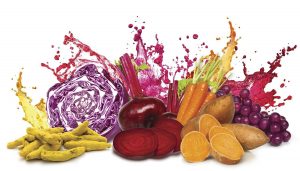
Colors and flavor play a vital role in the success or failure of a finished product the reason is if a product doesn’t look or taste good it won’t sell. Color additives that are used in food development are not only used to make the product more visually appealing but they also offset the possible color loss, enhances naturally occurring colors, and give-bland-looking foods an attractive hue. Flavor additives not only impart the flavor to a product but also have functional roles, like masking off notes and bitterness from nutritional ingredients for instance certain proteins, fibers, omega-3s, botanicals, and vitamins and minerals.
Related Projects:- Food Colours, Colors, Flavours, Flavors, Gums, Stabilizers, Food Industry Ingredients, Hydrocolloids and Additives Projects
The global market of Food colors, synthetic, natural, and nature-identical, reached US $3.8 billion in the year 2018 and is anticipated to reach $5.12 billion by the year 2023, showing a CAGR of 5.7 % in the forecasted period. The natural segment was driven by the high demand for food and beverage products made with natural and clean label ingredients for a big share of the total market.
Classification of Food Colors and Flavors Market
The industry of synthetic food colors is anticipated to grow on account of increasing product used by consumers across the developing economies. Moreover, the demand for synthetic colors such as, green and blue is projected to be fueled by their uses in the manufacturing industry of beverages. The growing global population is anticipated to result in demand for food and beverage products that is further likely to drive the demand for the product in the upcoming period.
- Non-alcoholics and carbonated soft drinks are expected to see the highest growth rate of 6.4% in the forecasted period owing to increasing disposable income and economic development. Additionally, the rising demand for ready-to-drink beverages is expected to translate into high demand for the product, leading to industry growth.
- Non-Dairy food Application will account for the highest segment due to the increasing use of products in sauces and salad dressings, chocolates, desserts, and bakery products. The growing use of food colors in the processed meat industry to improve the aesthetic appeal of the product is anticipated to push the growth of the food coloring market.
- The natural food color market is anticipated to be the largest product segment holds for over 80% of the total market revenue. The demand for natural food color is increasing substantially across the globe due to the increasing awareness among consumers regarding the health benefits related to natural food colors. The growing need for convenience foods because of the increasing consumer knowledge about the products with an exotic and traditional taste is anticipated to further promote the growth of the market in the upcoming years.
Related Books:- Food Additives, Food Colours, Colors, Flavours, Flavors, Gums And Stabilizers, Food Industry Ingredients
Uses of Food Coloring In Different Industries
If segmented in type the natural food colors and flavors market is divided into caramel, carotenoids, anthocyanins, and others. There are others too that are segmented into betalains, anthraquinones, carmine, cochineal extract, curcumin, turmeric, and copper chlorophyllin.
The applications of the food colors and flavors market is being segmented into beverages, bakery, and confectionery, dairy & frozen, meat products, etc. Furthermore, it has been segmented into soups, salad, condiments, dressings, and sauces.
Related Video:- Food Additives, Colours and Food Flavours Industry
Conclusion
“Food Colors, Flavors and Additives Technology Handbook” is the book written by NIIR PROJECT CONSULTANCY SERVICES (NPCS) that deals with food colorimetry, synthetic colors used food, manufacture of synthetic organic colors for food, analysis of synthetic food colors, synthetic dyes, aluminum lakes, inorganic pigments, etc. A book is a useful tool for all the new investors who do not have much idea of this industry. The book covers everything from micro to macro detail about the industry.
Noo_Art20